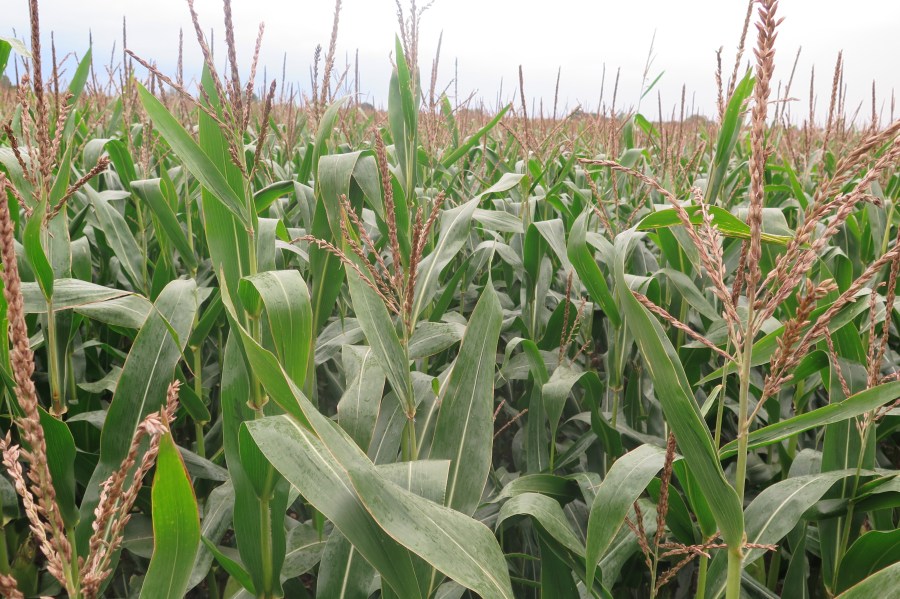Reducing stress in maize to ensure cob quality and dry matter yield will be even more important for crops entering pollen development stage at flowering, say experts.
According to Syngenta’s Andy Cunningham, stress at this point in the crop’s lifecycle deteriorates both the number of kernels set on each cob, as well as their quality.
“That typically occurs around the nine to 10 leaf stage in maize and will set crop quality for feed or biodigestion,” he says.
Heat stress risk
Andy explains that under moderate heat stress, pollen tube germination is restricted with a higher proportion of sterile anthers. “Maize is particularly susceptible to heat stress at this point. Application of Quantis (amino acids and peptides) prior to the tetrad stage helps to protect pollen development and successful fertilisation.”
Field trial results
Results from a field trial in Shropshire show application of Quantis at the 9-10 leaf stage on a crop of LG Prospect, increased cob weight by an average of 22% and produced an average cob length of 17.5cm. As a result, the treated crop yielded 35% more dry matter at 16.48t/ha, compared with the 12.21t/ha achieved by the farm standard.
Andy believes crops should receive an application of Quantis at 2.0 l/ha prior to the sensitive tetrad stage with further applications if the crop is subjected to significant heat stress events during the cob and grain fill stages.
“Maize is generally more resilient to higher temperatures through the growing season. However, if sustained temperatures over 30⁰C do occur, as has increasingly been the case in recent seasons, significant reduction in the plant’s activity and performance can occur,” says Andy.
“Quantis application prior to heat events has been shown to help plants to better cope with the conditions, as well as to recover faster without long-lasting effects.”




